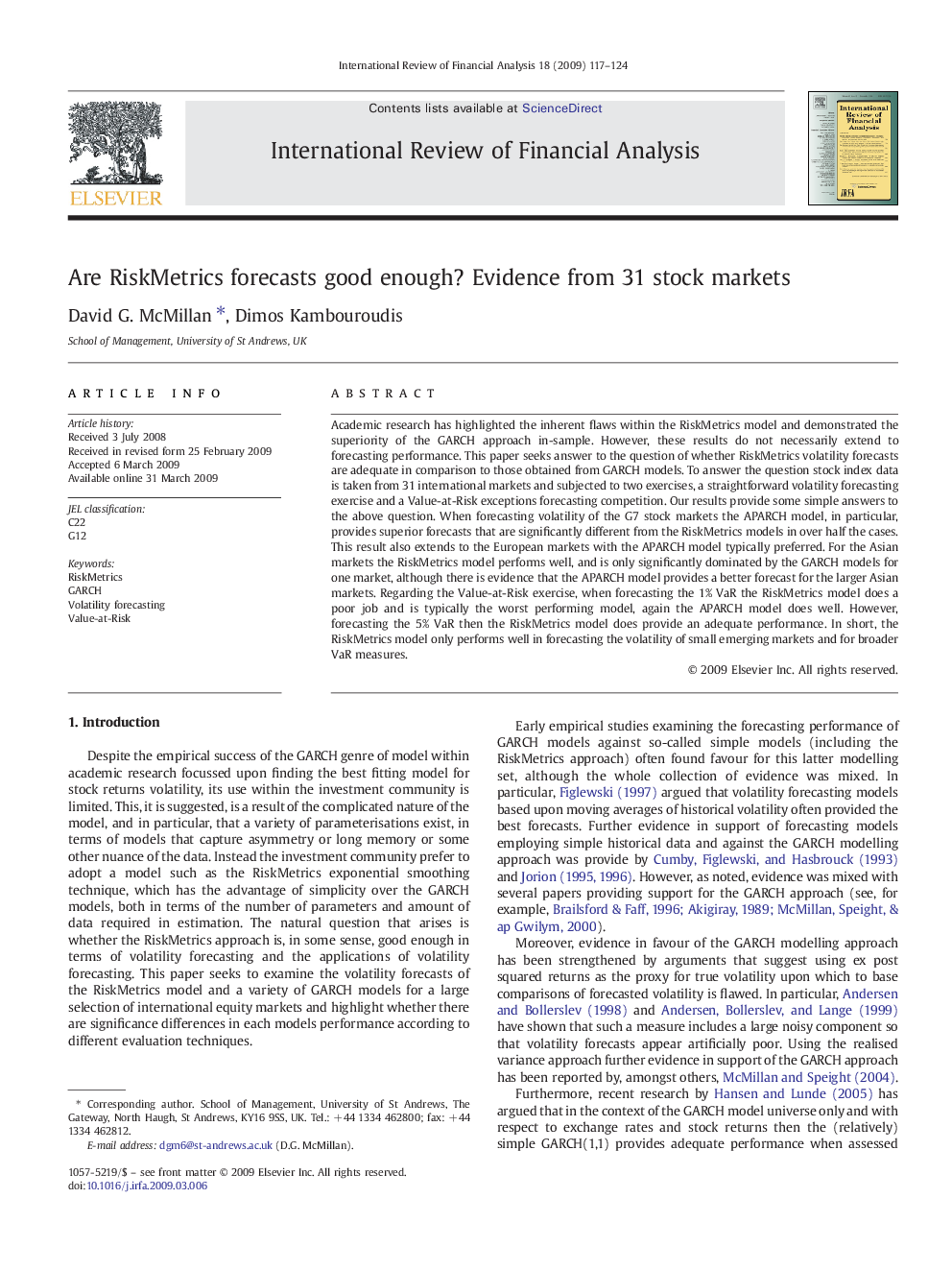| Article ID | Journal | Published Year | Pages | File Type |
|---|---|---|---|---|
| 5085348 | International Review of Financial Analysis | 2009 | 8 Pages |
Abstract
Academic research has highlighted the inherent flaws within the RiskMetrics model and demonstrated the superiority of the GARCH approach in-sample. However, these results do not necessarily extend to forecasting performance. This paper seeks answer to the question of whether RiskMetrics volatility forecasts are adequate in comparison to those obtained from GARCH models. To answer the question stock index data is taken from 31 international markets and subjected to two exercises, a straightforward volatility forecasting exercise and a Value-at-Risk exceptions forecasting competition. Our results provide some simple answers to the above question. When forecasting volatility of the G7 stock markets the APARCH model, in particular, provides superior forecasts that are significantly different from the RiskMetrics models in over half the cases. This result also extends to the European markets with the APARCH model typically preferred. For the Asian markets the RiskMetrics model performs well, and is only significantly dominated by the GARCH models for one market, although there is evidence that the APARCH model provides a better forecast for the larger Asian markets. Regarding the Value-at-Risk exercise, when forecasting the 1% VaR the RiskMetrics model does a poor job and is typically the worst performing model, again the APARCH model does well. However, forecasting the 5% VaR then the RiskMetrics model does provide an adequate performance. In short, the RiskMetrics model only performs well in forecasting the volatility of small emerging markets and for broader VaR measures.
Related Topics
Social Sciences and Humanities
Economics, Econometrics and Finance
Economics and Econometrics
Authors
David G. McMillan, Dimos Kambouroudis,
